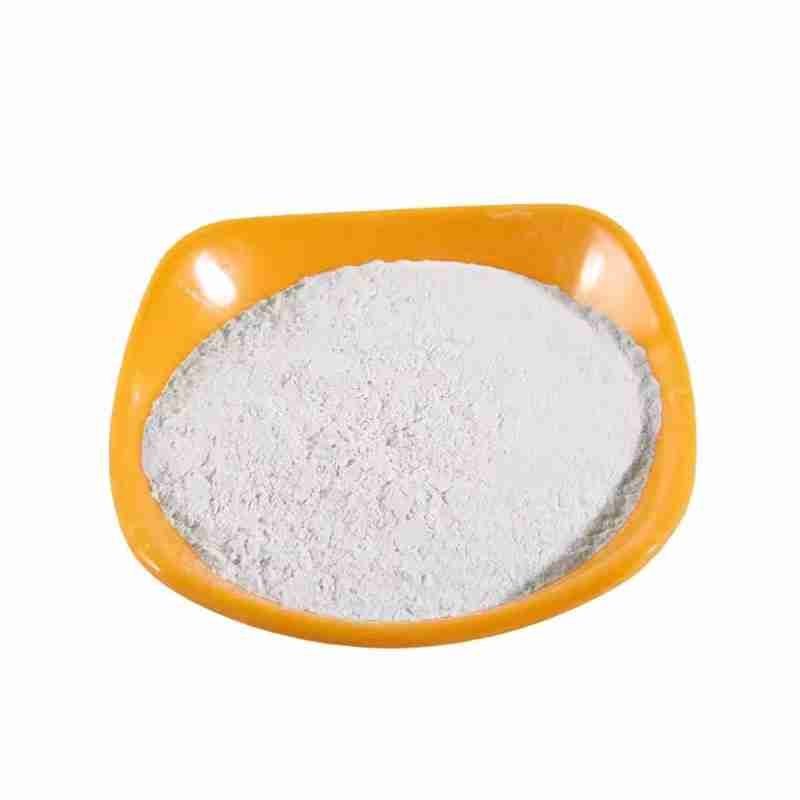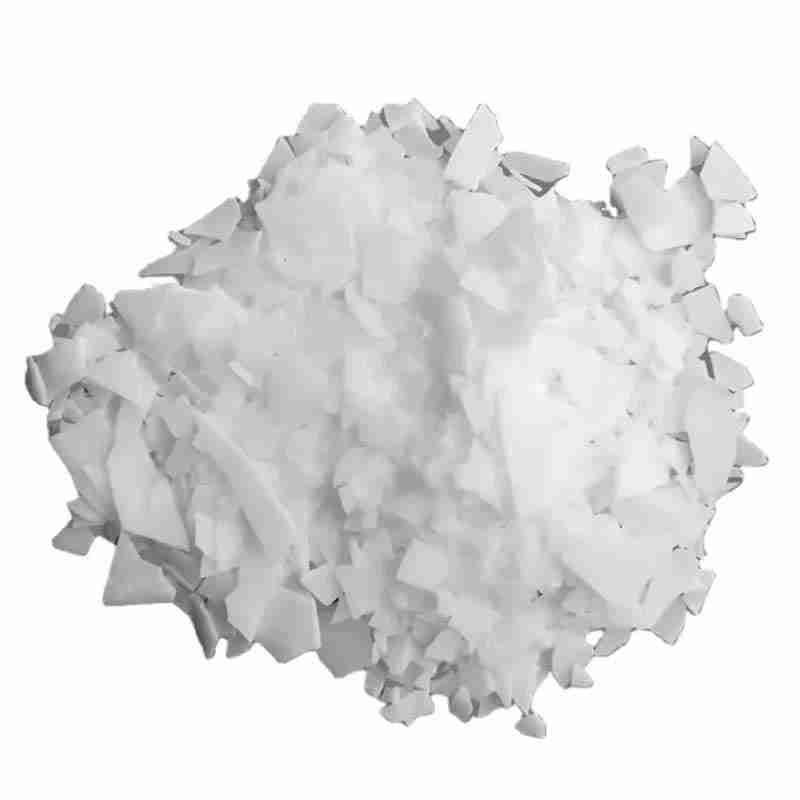Sodium dodecyl sulfate CAS#151-21-3
Sodium dodecyl sulfate is an anionic surfactant, and is a typical representative of sulphate-based surfactant. It is abbreviated as SDS, and also known as AS, K12, coco alcohol sulfate, sodium lauryl sulfate and foaming agent. The commercial products are usually white to light yellow crystalline powder. It is non-toxic, slightly soluble in alcohol, insoluble in chloroform and ether, soluble in water, and has good anionic and nonionic complex compatibility. It has good emulsibility, foamability, and foaming, infiltrating, decontaminating and dispersing properties. It is abundant in foams and quickly biodegradable, and has solubility next only to fatty alcohol polyoxyethylene ether sodium sulphate (abbreviated as AES). It is not sensitive to alkali and hard water, but its stability is inferior to general sulfonate under acidic conditions and is close to AES. It is not favorable to exceed 95 ??C upon long-term heating, and its irritation is at the middle level among surfactants, with an irritation index of 3.3 for a 10% solution, which is higher than AES and lower than sodium dodecyl benzene sulfonate (abbreviated as LAS). Toxicity LD50 is 1300mg/kg. There is no evidence that this product is carcinogenic, but high doses may indeed irritate the skin. However, in general sanitary products the concentration is limited when used as a forming agent, and is in line with national standards. So there is no need to concern.
Sodium dodecyl sulfate is a major component of detergent. It is usually used in the DNA extraction process to separate DNA after protein denaturation. It is often misread as sodium dodecyl sulfonate. It is widely used as a foaming agent in toothpaste, soap, shower gel, shampoo, detergent and cosmetics. 95% of personal care products and household cleaning products contain sodium lauryl sulfate.
The above information is edited by the chemicalbook of Jin Yinxue.
发送询盘
Sodium dodecyl sulfate CAS#151-21-3
| Product Name: | Sodium dodecyl sulfate |
| Synonyms: | LAURYL SULFATE SODIUM SALT;LAURYL SODIUM SULFATE;LAURYL SULFATE, SODIUM;LAURYL SULFATE NA-SALT;IPC-SDS;DODECYLSULFURIC ACID SODIUM SALT;DODECYL SULFATE SODIUM;DODECYL SULFATE SODIUM SALT |
| CAS: | 151-21-3 |
| MF: | C12H25NaO4S |
| MW: | 288.38 |
| EINECS: | 205-788-1 |
| Product Categories: | Biochemicals and Reagents;Denaturation;Alkyl Sulfates;Antigen-Vaccine Preparation;Detergents by Applications;detergent;Diagnostic Applications;Drug Delivery-Liposomes;Electrophoresis Chromatography;Enzymology;Membrane Protein Solubilization;Organic Sulfates/Sulfites;Anionic Detergents;Building Blocks;Analytical Chemistry;Biochemistry;HPLC Ion-Pair Reagents for Basic Samples;Ion-Pair Reagents for HPLC;Surfactants (for Biochemistry);Reagents for Electrophoresis;Cell Culture;Chemical Synthesis;Core Bioreagents;Detergents;Detergents N to Z;Life Science Reagents for Protein Electrophoresis;Molecular Biology;Organic Building Blocks;Research Essentials;Sulfur Compounds;Hair Care;Home Care;Oral Care;Skin Care;Sulfate (Surfactants);Anionic Surfactants;Functional Materials;Surfactants;Anionic Surfactants (for Biochemistry);metal sulfate;Cosmetics;K12;151-21-3 |
| Mol File: | 151-21-3.mol |
| Melting point | 204-207 ??C (lit.) |
| density | 1.03?g/mL?at 20???C |
| FEMA | 4437 | SODIUM LAURYL SULFATE |
| Fp | >100??C |
| storage temp. | 2-8??C |
| solubility | H2O: 0.1?M, clear to nearly clear, colorless to slightly yellow |
| form | Powder or Crystals |
| color | White to pale yellow |
| PH | 6-9 (10g/l, H2O, 20??) |
| Odor | Slight fatty odour |
| PH Range | 7.2 |
| Water Solubility | ca. 150 g/L (20 oC) |
| ??max | ??: 260 nm Amax: 0.3 ??: 280 nm Amax: 0.2 |
| Merck | 14,8636 |
| BRN | 3599286 |
| InChIKey | DBMJMQXJHONAFJ-UHFFFAOYSA-M |
| LogP | 1.600 |
| CAS DataBase Reference | 151-21-3(CAS DataBase Reference) |
| EPA Substance Registry System | Sodium lauryl sulfate (151-21-3) |
| Safety Information |
| Hazard Codes | F,Xn,Xi |
| Risk Statements | 36/37/38-36/38-22-11-21/22-42-41-20/21/22-37/38 |
| Safety Statements | 26-36/37-36/37/39-36-22-39 |
| RIDADR | UN 2926 4.1/PG 2 |
| WGK Germany | 2 |
| RTECS | WT1050000 |
| F | 3 |
| TSCA | Yes |
| HazardClass | 4.1 |
| PackingGroup | III |
| HS Code | 29209010 |
| Hazardous Substances Data | 151-21-3(Hazardous Substances Data) |
| Toxicity | LD50 orally in rats: 1288 mg/kg (Walker) |
- 2
- 2-diallylpent-4-en-1-amine
- 4
- 95-16-9
- Ammonium sulfamate
- Benzothiazole
- cas:67889-00-3ح2
- cas:83524-75-8 | pigment black 32
- cas:928836-00-4 | 2
- cas:932745-70-5 | 4
- Chemical Minerals
- Coconut diethanolamide
- Daily Chemicals
- discount
- for sale
- General pvc resin
- hexyl D-glucoside
- in stock
- Lauramidopropyl betaine
- LAURIC ACID MONOETHANOLAMIDE
- Petroleum Additives
- Plasticiser
- Ploymers
- price
- PVC
- quotation
- Raw Materal
- Remove term: Petroleum Additives Petroleum Additive
- SODIUM ETHYL 2-SULFOLAURATE
Related Products
Chemical Name: 3-Hydroxybutyric acid
CAS No.: 625-71-8
Molecular Formula: C4H8O3
Molecular Weight: 104.1
Appearance: White powder
Chemical Name: Potassium Castorate
CAS No.: 8013-05-6
Molecular Formula: C57H107K3O12
Molecular Weight: 1101.74718
Appearance: Yellow Liquid
Common English name: 5-iodo-2,3-dihydropyridazin-3-one
CAS No.: 825633-94-1
Molecular formula: C4H3IN2O
Molecular weight: 221.98
Sample: Available
Product name:Cyclopentane
Purity:96%
Appearance:White powder
Package:25kg/bag
Sample:Available
Chemical Name: 1,1,2,2-Tetrachloroethane
Other Name: Tetrachlorethane
CAS No.: 79-34-5
Molecular Formula: C2H2Cl4
Molecular Weight: 167.85
Appearance: Liquid
Coconut Oil Monoethanolamide is a high-performance emulsifier derived from natural coconut oil. It is a key component in personal care and cosmetic formulations, providing excellent emulsifying properties and improving product texture. With its natural origin and superior performance, it is the preferred choice for creating stable and high-quality products.
Chemical Name: Choline salicylate
CAS No.: 2016-36-6
Molecular Formula: C12H19NO4
Molecular Weight: 241.28
Appearance: Red-Brown Crystal
Chemical Name: Dehydrocholic acid
Synonyms: Acide dehydrocholique; Triketocholanic acid
CAS No.: 81-23-2
Molecular Formula: C24H34O5
Molecular Weight: 402.53
Appearance: Powder
Chemical Name: Imazalil Sulfate
CAS No.: 58594-72-2
Molecular Formula: C14H14Cl2N2O.H2SO4
Molecular Weight: 395.26
Appearance: Solid
Lauramidopropyl betaine is a mild, biodegradable surfactant commonly used in personal care products and cleaning formulations. It is derived from coconut oil and is known for its foaming and wetting properties, making it ideal for creating rich lathers. This ingredient is particularly favored for its gentleness on the skin and its ability to cleanse without causing irritation, making it suitable for sensitive skin types. It also contributes to the product’s viscosity and stability.
Lauramidopropyl betaine is a mild, biodegradable surfactant commonly used in personal care products and cleaning formulations. It is derived from coconut oil and is known for its foaming and wetting properties, making it ideal for creating rich lathers. This ingredient is particularly favored for its gentleness on the skin and its ability to cleanse without causing irritation, making it suitable for sensitive skin types. It also contributes to the product’s viscosity and stability.
Decyl glucoside, scientifically known as ??-D-Glucopyranoside, is a non-ionic surfactant derived from renewable resources, such as glucose and fatty alcohols. It is a biodegradable and mild alternative to traditional surfactants, making it a preferred choice for eco-friendly and sensitive skin formulations.
This compound is characterized by its ability to form stable emulsions and foams, which are essential properties in a variety of applications, including personal care products and household cleaning agents. Decyl glucoside is valued for its low irritation potential and excellent skin compatibility, making it suitable for use in baby care and cosmetic products.
Chemically, decyl glucoside features a hydrophilic head and a hydrophobic tail, allowing it to effectively reduce surface tension and solubilize oils in water. Its mildness and biodegradability contribute to its use in formulations that require gentle cleansing without compromising the integrity of the skin’s natural barrier.
In summary, decyl glucoside is a versatile and sustainable surfactant that offers a balance of performance and safety. Its eco-friendly profile and compatibility with sensitive skin types make it an ideal ingredient for a wide range of personal care and cleaning products.

















